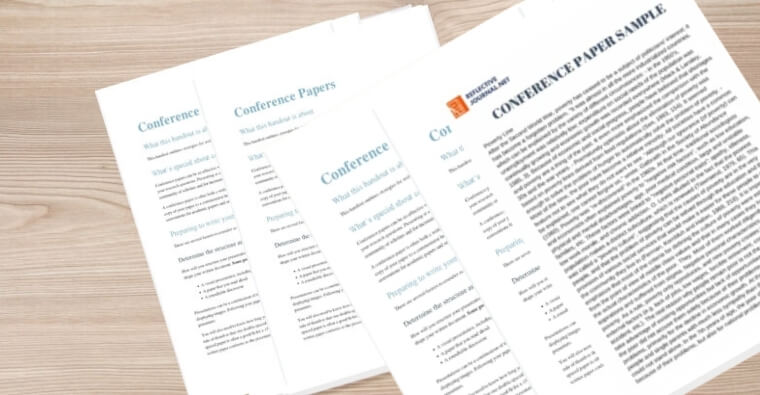The academic world is buzzing with discussions about the value and visibility of research. For many scholars, presenting at conferences is an exciting opportunity to share innovative ideas and connect with peers. However, a common question often surfaces, does conference paper have an impact factor?
While traditional impact factors primarily apply to academic journals, the concept surrounding conference papers is a bit different. Conference papers don’t typically have formal impact factors like journals, but their significance can still be measured through the reputation of the conference and the engagement they inspire.
As we explore this topic further, you’ll discover how conference papers can still have a meaningful impact on the academic community. So, let’s dive in and unravel the details of the conference paper’s impact.
What Is an Impact Factor in Conference Paper?
Being familiar with the concept of an impact factor is essential for researchers looking to evaluate their work’s significance. An impact factor traditionally refers to the average number of citations received by articles published in a specific academic journal over a set period.

However, when it comes to conference papers, the idea takes on a different form. Conference papers typically don’t have formal impact factors like journals. Instead, their impact is often measured by the reputation of the conference itself, which can serve as an informal impact factor for a conference, particularly when it attracts influential researchers.
High-quality conferences attract leading researchers, which can enhance the visibility and credibility of the presented papers. Additionally, the peer review process at these conferences plays a vital role in determining the quality of the research shared.
While there may not be a direct impact factor, conference papers can still significantly influence the academic community. They facilitate discussions, lead to collaborations, and spark new ideas.
Ultimately, the impact of a conference paper is reflected in its citations and how it communicates within its field, making it a valuable contribution to ongoing research dialogues.
Does Conference Paper Have an Impact Factor?
Trying to comprehend whether conference papers have an impact factor can be a bit difficult for many researchers. Unlike academic journals, which have established metrics for evaluating their influence, conference papers operate at a different level. Let’s explore the ways to identify if conference papers carry an impact factor or how to assess their significance.
Research Conference Reputation
The first step in determining the impact of a conference paper is to investigate the reputation of the conference itself. Conferences with a long-standing history of quality research often attract esteemed scholars, which can increase the perceived value of the papers presented there.
Review Peer Review Processes
Many reputable conferences have specific peer review processes to maintain high standards. Understanding how submissions are assessed can give insight into the quality of accepted papers. This is especially true for events like conferences in Canada, USA, and other leading countries’ conference, where thorough review systems help ensure valuable contributions. A strong review process typically indicates a higher potential impact.
Examine Conference Proceedings
Conferences often publish proceedings that feature the accepted papers. To gauge the visibility and impact of these conference papers, it’s important to check if the proceedings are indexed in well-respected academic databases.
Being indexed in such platforms typically indicates that the conference papers have a greater reach and are more likely to be cited by other researchers, enhancing their overall significance within the academic community.
Analyze Citation Metrics
While conference papers may not have formal impact factors, tracking their citations can offer valuable insights. Use citation databases like Google Scholar or Scopus to see how often a paper has been cited. A higher citation count can reflect its influence within the academic community.
Consider the Field-Specific Norms
Different academic disciplines place varying importance on conference papers. In some fields, such as computer science or engineering, conference papers are highly regarded and can be cited frequently. A clear knowledge of the norms in your specific field can help assess the impact of conference papers.
Look for Published Versions
Many researchers expand their conference papers into full articles for publication in journals. If a conference paper leads to a journal article in a high-impact journal, it can increase the original paper’s credibility and significance.
Engage with Academic Networks
Networking with colleagues and attending conferences can provide firsthand insights into which conferences are well-regarded in your field. Engaging in discussions with peers about their experiences can help identify conferences with substantial impact.
Review Overall Contributions
Finally, assess how the conference paper contributes to ongoing research conversations. If the paper introduces new ideas, methodologies, or solutions to existing problems, it may hold significant value despite not having a formal impact factor.
While conference papers typically don’t have a formal impact factor like academic journals, their significance can be analyzed through various methods. By researching the conference’s reputation, examining peer review processes, and analyzing citation metrics, researchers can gauge the impact of their work in the academic landscape.
How Are Impact Factors Calculated?
Analyzing how impact factors are calculated can show the ways researchers evaluate the significance of journals in their field. These factors play a vital role in academic publishing, helping authors determine where to submit their work. Let’s break down the calculation of impact factors into the following key points.
Definition of Impact Factor
The impact factor is a numerical measure that reflects the average number of citations received by articles published in a specific journal over a defined period, usually one or two years. It serves as a benchmark for assessing the journal’s influence in the academic community.
Citation Count
To calculate the impact factor, the total number of citations received by articles published in the journal during the previous two years is counted. This includes citations from all articles, such as original research, reviews, and editorials. The more citations a journal receives, the higher its impact factor.
Total Articles Published
The next step is to determine the total number of articles published in that journal during the same two-year period. This count includes all types of content published within the journal, giving a comprehensive view of its output.
Applying the Formula
The impact factor is derived using the following formula:
Impact Factor= Total Articles Published in the Previous Two Years/ Citations in the Current Year to Articles Published in the Previous Two Years
By applying this formula, researchers can calculate the impact factor for any journal, allowing for comparisons across various publications.
Limitations of Impact Factors
While impact factors are useful, they have limitations. They may not accurately reflect the quality of individual articles, and factors such as the size of the field and publication practices can influence the numbers. Therefore, impact factors should be used as one of many tools in assessing research quality.
Field-Specific Differences
Finally, it’s important to note that different academic fields have different citation practices and norms. In some disciplines, journals may have higher impact factors due to the nature of the research and the frequency of citations, making comparisons across fields complex.
By recognizing these key points, researchers can better appreciate how impact factors are calculated and their significance in the academic field.
What is the Importance of Impact Factors in Academic Publishing?
Impact factors play a crucial role in academic publishing, serving as a key metric for researchers, institutions, and funding agencies alike. The knowledge of their importance can help scholars understand the complex field of academic research and publication. Here are a few points highlighting the significance of impact factors.
Quality Assessment
Impact factors provide a quick reference for assessing the quality of academic journals. Researchers often use these metrics to identify reputable journals that publish high-quality research, helping them make informed decisions about where to submit their work.
Visibility and Recognition
Publishing in journals with high-impact factors increases a researcher’s visibility within their field. Articles in these journals are more likely to be read and cited, enhancing the author’s recognition and credibility in the academic community.
Influence on Funding
Many funding agencies consider impact factors when evaluating grant applications. Researchers who publish in high-impact journals may be perceived as more credible, making them more likely to secure funding for future projects.
Institutional analysis
Academic institutions often use impact factors to assess faculty performance. Publications in high-impact journals can positively influence tenure decisions, promotions, and overall academic advancement.
Field Comparisons
Impact factors allow researchers to compare journals within their discipline. This comparison helps scholars understand the publishing landscape and identify where their work fits best, guiding them in choosing the right journals.
Encouraging Quality Research
The emphasis on impact factors encourages researchers to produce high-quality work. Knowing that their papers will be evaluated based on the journal’s impact can motivate scholars to conduct thorough and innovative research.
So, impact factors are vital in academic publishing, influencing decisions related to quality, visibility, funding, and career advancement. By recognizing their importance, researchers can better manage the publishing process and maximize their contributions to their fields.
How Important It Is to Present Papers at a Conference?
Presenting papers at conferences is a crucial aspect of academic life that offers numerous benefits for researchers. It’s not just about sharing findings; it’s an opportunity to engage with peers and improve your professional profile. Here are the reasons why presenting at conferences is so important.
Visibility for Your Research
Conference presentations provide a platform to showcase your work to a targeted audience. This visibility can lead to increased interest in your research and greater chances of being cited in future studies.
Immediate Feedback
Presenting your paper allows you to receive real-time feedback from fellow researchers and experts in your field. This input can help refine your ideas and improve the overall quality of your work before publication, especially in terms of the essential components of a conference paper.
Networking Opportunities
Conferences bring together a diverse group of scholars, researchers, and industry professionals. Presenting your paper allows you to connect with others, potentially leading to collaborations, mentorship, and valuable professional relationships.
Improving Communication Skills
Delivering presentations helps you develop essential communication skills. Effectively conveying complex ideas in a clear and engaging manner is a valuable skill that benefits your academic and professional career.
Establishing Your Reputation
Successfully presenting at reputable conferences can enhance your credibility in your field. It demonstrates your expertise and commitment to advancing knowledge, which can open doors for future research opportunities and funding.
Contributing to the Academic Community
By sharing your research at conferences, you contribute to ongoing discussions and advancements in your field. Your work may inspire others, stimulate new ideas, and foster collaborations that can lead to innovative research.
So, presenting papers at conferences is vital for personal and professional growth in academia. The benefits extend far beyond the presentation itself, making it an invaluable experience for researchers.
What Researchers Should Know About Conference Paper Impact?
Conference papers play an important role in the academic world, serving as platforms for sharing innovative ideas and encouraging collaborations. However, knowing their impact can be complex. Here are the key points researchers should know about the impact of conference papers.
Value of Networking
Presenting a paper at a conference offers invaluable networking opportunities. Engaging with fellow researchers allows authors to share insights, receive feedback, and establish potential collaborations, all of which can enhance the impact of their work. Networking is one of the critical aspects of a conference paper experience.
Quality of Peer Review
Many reputable conferences have a rigorous peer review process. This ensures that only high-quality research is presented, which can improve the credibility and visibility of the conference papers, making them more impactful in the academic community.
Citations Matter
While conference papers may not have formal impact factors, their influence can often be gauged by citation counts. Papers that are frequently cited by other researchers indicate a significant impact within the field, demonstrating that the work resonates with peers.
Publication Opportunities
Often, conference papers are expanded into journal articles. If a conference paper leads to a publication in a high-impact journal, it can significantly enhance the visibility and perceived value of the original work.
Field-Specific Importance
The impact of conference papers can vary significantly across disciplines. In fields like computer science or engineering, conference papers are highly regarded and can carry substantial weight, while in other areas, journal publications may take precedence.
Long-Term Influence
The impact of a conference paper may not be immediate. Over time, as ideas develop and new research emerges, conference papers can continue to influence future studies and innovations, contributing to the ongoing development of the field.
By recognizing these aspects, researchers can better appreciate the significance of their contributions through conference papers and leverage these opportunities for greater impact in their academic journeys.
Frequently Asked Questions
Here are some frequently asked questions about whether conference papers have an impact factor, along with friendly, humanized answers. These questions can help clarify common concerns and misconceptions surrounding conference papers.
Are Conference Proceedings Indexed?
Yes, many conference proceedings are indexed in reputable databases, which can enhance their visibility. Being indexed allows other researchers to find and cite these papers, increasing their influence and contribution to the academic community.
Can a Conference Paper Be Published Later?
Absolutely! Many researchers expand their conference papers into full articles for publication in academic journals. This process not only boosts the paper’s visibility but also allows for further refinement based on feedback received during the conference.
Is Presenting at a Conference Beneficial?
Yes, presenting at a conference offers numerous benefits. It provides a platform for networking, receiving immediate feedback, and engaging with peers, all of which can enhance the impact and credibility of your research in the academic community.
Are All Conferences Valuable for Researchers?
Not all conferences hold the same value. The impact of a conference often depends on its reputation, the quality of the research presented, and the relevance of its topics to your field. Choosing wisely can significantly enhance your research visibility.
What is the Difference Between a Journal and a Conference Paper?
The main difference lies in the format and purpose. Journal articles are typically longer, undergo strict peer review, and are published less frequently, while conference papers are shorter, focus on presenting new ideas, and facilitate immediate feedback during conferences.
Is It Important to Cite Conference Papers?
Yes, citing conference papers is important as it acknowledges the contribution of the authors and helps others find relevant research. Citing these works also upgrades their visibility and influence in the academic community.
Last Words
Getting around the academic world can be challenging, especially when it comes to comprehending the details of conference papers. As we’ve explored, the question “Does conference paper have an impact factor?” reveals a complex reality. While conference papers don’t have formal impact factors like journals, they still hold significant value in the research community.
The reputation of the conference, the quality of the peer review process, and the networking opportunities they provide all contribute to their impact. These elements can amplify the visibility and influence of the research presented.
Ultimately, conference papers are vital in forming discussions, sparking collaborations, and advancing knowledge in various fields. Taking advantage of these opportunities can significantly improve your academic journey and contribute to the ongoing evolution of research.







